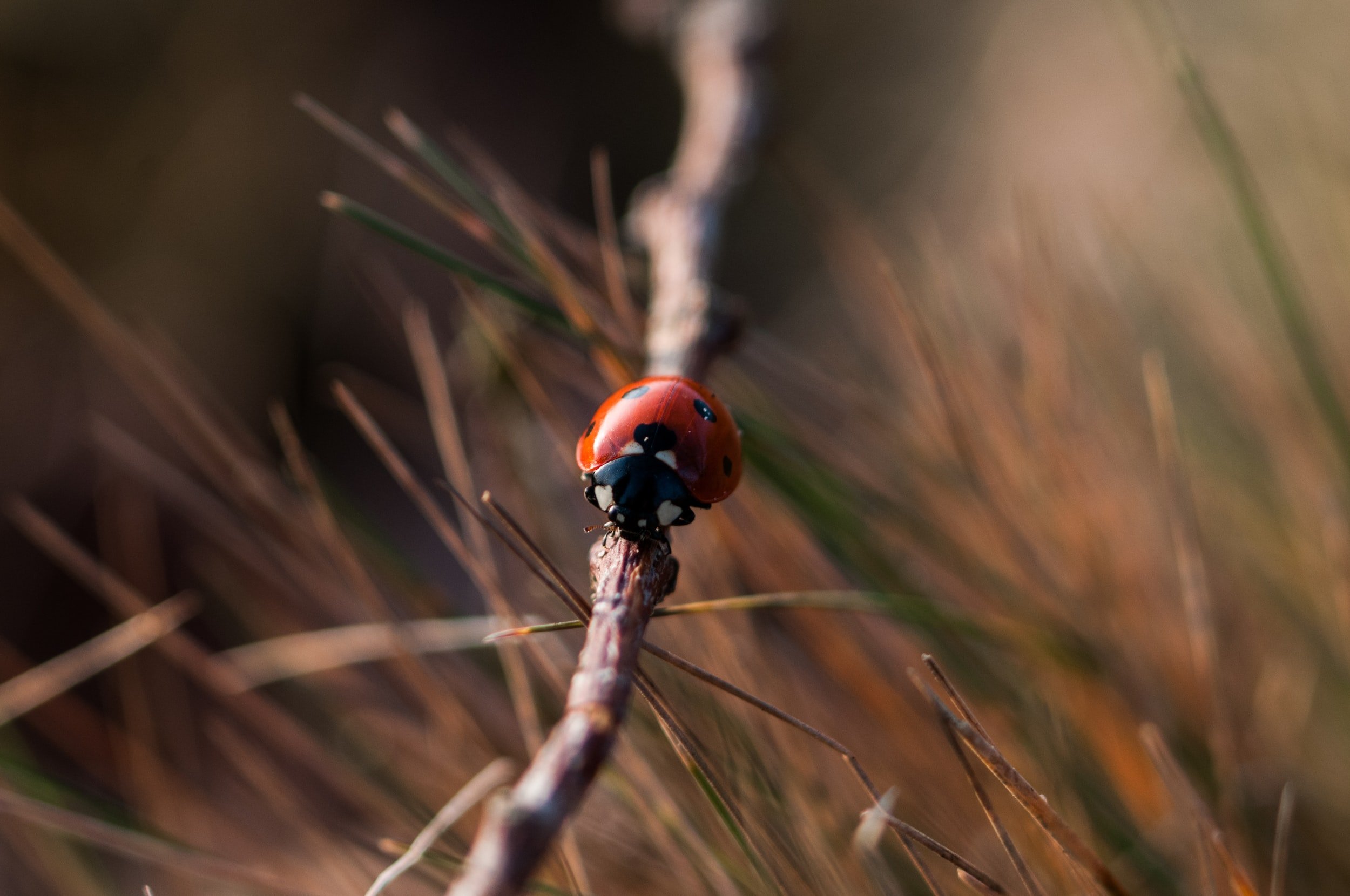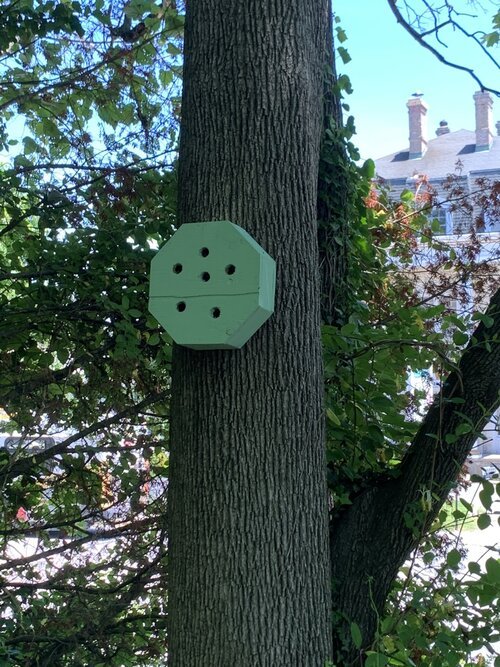
Preserving Insects
Preserving Insects in Govans Urban Forest
This community project was completed in Professor Billy Friebele’s SA 367 / CM 370 Public Art Fine Art class. Students participating in this project were: Nathalie Walker, Tori Matrini, Tonia Murphy, Emily Seeberger, and Marie Louis-Charles. The project was completed on May 7, 2019. Professor Friebele’s class partnered with Public Spaces & Greening Committee of the York Road Partnership and worked closely with committee member Professor Emeritus of Physics, Helene Perry.

Beehive

Beehive

Loyola students, Nathalie Walker, Tori Matrini, Tonia Murphy, Emily Seeberger, and Marie Louis-Charles, creating and installing the beehives in Govans Urban Forest.

Govans Urban Forest Trail

Insect HoteI

Insect Hotel

Beehive
Project Description
The Renovation of Govan’s Urban Forest will improve the ecological well-being of the Govans Urban Forest and encourage community engagement with the forest by adding a functional beehive and multiple insect hotels to the space. Our project is rooted in the relationship of material change into social change. By nurturing the ecological environment we can encourage individuals to take pride in their community, respect it, and meld the community together through a happy, peaceful, and safe place to gather.
We strive to improve the ecological well-being of the forest by creating insect habitats and encouraging biodiversity. Over the last 41 years, insect populations have decreased by 45% worldwide. Contributing factors include habitat loss, pollution and the widespread use of pesticides. The introduction of a beehive and insect hotels to this space aims at combating this issue by creating sanctuaries for pollinating insects. The promotion of insect population growth will benefit the ecological well-being of the space by increasing pollination and expanding the food source for birds and other insectivores.
Another goal of our project is to encourage the surrounding community to engage more with the Govans Urban Forest by enhancing its aesthetic appeal and creating a destination for educational outings. Currently, very few people visit the forest, and it lacks visual appeal and other elements that may draw visitors. Aesthetically, there is only a painted wooden sign out in front facing York Rd and a few painted birdhouses scattered throughout the park. The use of bright colors and intricate design of the beehive will attract individuals from the street to come into the forest. Although the insect housing will be neutral tones, the shape of the first will disrupt the space to bring attention to the unique architecture.
As for the second hotel, it will become an ecological sculpture to the experiencing landscape. This will allow the community to be connected and unified with the space and the art. The beehive and insect hotels will encourage visits to the forest for educational purposes by serving as a tool to learn about pollination, the environment, and related topics.
The location of the Govans Urban Forest is ideal for teachers to inform the children about the importance of our environment and how it impacts us as humans and as a community. It will, in turn, create a healthier dynamic and respect for the space in future generations. It is a free and exciting space for teaching and learning about our environment and learning to love it.
The final outcome of this project is a functional painted beehive and a collection of bee hotels. These items will serve the community by promoting the ecological well-being of the Govans Urban Forest through the promotion of biodiversity and making the space more inviting for nature appreciation and educational exploration. This will result in an increase in the population of bees & other native pollinators, an increase in visits to the forest, and a community more educated on pollinators and ecosystems.
It will change the material items and location to help create social change among the community to find a new found appreciation and respect the space that is around them and is their home.